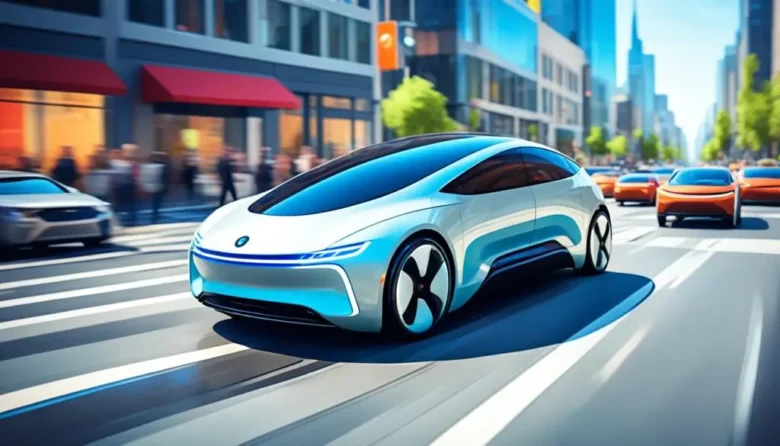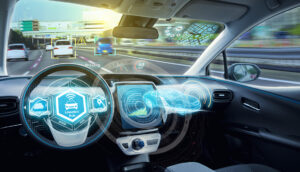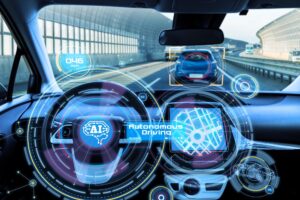The idea of self-driving vehicles has developed from a science-fictional idea to an exciting reality. In the past decade, major automakers as well as technology-based companies and entrepreneurs have invested hundreds of millions into research and development to make self-driving technology a reality. This has not only brought about significant technological advancements in sensor technology as well as artificial intelligence and real-time data processing, but it has also spurred discussions on safety regulations, infrastructure, and safety. Autonomous vehicles are currently being tested in various cities around the world. Although we have not yet mastered full automation, the basis is set for the future.
Technological Advancements Paving the Way
The next ten years will witness rapid advancements in the technologies that support autonomous vehicles. Lidar sensors will become less expensive as well as more effective, allowing greater object detection and distance. Artificial intelligence will grow, which will allow vehicles to be able to learn from driving situations more efficiently. High-definition mapping, real-time road analysis, and predictive algorithmic algorithms come together to create an effortless, safe, and secure driving experience. These advancements will drastically reduce the chance of errors and make autonomous driving more feasible for daily usage.
The Impact on Urban Mobility and Infrastructure
As autonomous vehicles become more prevalent in cities, the city’s infrastructure and planning will begin to evolve to accommodate the vehicles. Smart traffic signals, vehicle-to-infrastructure communication, and dynamic road usage models will emerge. Cities could decrease the requirement for parking when shared autonomous vehicles rise in popularity, creating greater green spaces and pedestrian-friendly areas. Additionally, traffic congestion may be reduced due to better coordination between autonomous vehicles, which will result in faster travel times and fewer emissions.
Autonomous Vehicles and Environmental Benefits
A major and exciting feature of self-driving vehicles is the potential for their impact on environmental sustainability. With optimized driving patterns and fewer idle times, autonomous vehicles can drastically reduce the amount of fuel consumed as well as greenhouse gas emissions. Electric autonomous vehicles can enhance these advantages by removing tailpipe emissions completely. Furthermore, ride-sharing companies that use self-driving electric cars will lead to fewer cars on the road, reducing the environmental impact of transport systems.
Economic Implications and Job Market Shifts
Although autonomous vehicles can offer greater efficiency and lower cost of transportation, they present challenges to the employment market. Many people across the world rely on driving for income, which includes taxi drivers, truckers, and delivery drivers. As automation becomes more prevalent, the jobs of these workers could decline, which will require retraining and transition programs. However, new opportunities for work will be created in areas such as AI development and cybersecurity, vehicle maintenance, and traffic and transportation management. Leaders from the industry and policymakers need to collaborate to create a sustainable economy that will support workers in this phase of change.
Regulatory and Ethical Considerations
The introduction of autonomous vehicles is going to require a thorough ethical and legal structure. Governments need to create regulations that guarantee the safety and security of autonomous vehicles while encouraging technological innovation. Concerns about liability in the event of an accident, privacy concerns for data, and emergency decision-making situations need to be resolved. Ethics-related issues, like how autonomous vehicles should react in a foreseeable crash, will require thoughtful solutions. The clarity of regulations is crucial to build trust among the public and encourage widespread adoption.
Consumer Acceptance and Behavioral Changes
Despite technological advances, the lack of acceptance by consumers is an issue for autonomous vehicles. Being able to trust a machine with the driving duties is a major mental change. In the coming years, companies must spend money on public education as well as open communications to increase confidence in the technology. Testing programs, favorable coverage in the media, and real-world stories of success can all be helpful in easing the public’s concerns. As more people are exposed to the convenience and security of autonomous vehicles The acceptance will rise, eventually changing society’s attitudes toward transportation.
Integration with Public Transportation Systems
Autonomous vehicles aren’t designed to replace public transportation but to supplement it. In the coming decade we could have integrated mobility systems in which autonomous shuttles or automobiles provide first- and last-mile connections to bus and train station stops. This multimodal system will help make public transportation more efficient and more appealing, especially in rural and suburban regions. Autonomous solutions may also be used at times that are not peak hours or in areas that are not well-served, providing more inclusive mobility options for all segments of the populace.
Safety Improvements and Reduction in Traffic Accidents
One of the strongest arguments in favor of autonomous vehicles lies in the possibility of greater road security. Human error is the reason behind the majority of road accidents. With fully autonomous systems that never tire or get distracted, the risk of collisions is predicted to drop significantly. In the coming years, enhanced AI, quicker response times, and continuous connectivity will result in an environment that is safer for drivers. Insurance companies might also modify the policies they offer to accommodate the lower risk level in autonomous cars, possibly cutting the costs for customers.
Conclusion
Future autonomous vehicle technology is fascinating and complicated. In the coming decade we can expect major technological advances that will bring self-driving vehicles closer to widespread acceptance. While there are some obstacles to be overcome—like the regulations, public trust, and shifts in economics—the advantages are many. From better roads and a greener environment to better urban planning and accessible mobility, autonomous vehicles are poised to change our way of life and work as well as how we move. The next 10 years will be vital in shaping the future of transportation that is greener, smarter, and more interconnected.
FAQs
1. What exactly is an autonomous car?
A self-driving vehicle (AV) is one that can operate autonomously with no human input, making use of cameras, sensors, AI, and the processing of data in real time.
2. Who is accountable when an autonomous vehicle is involved in a crash?
Legal frameworks are in the process of changing, and liability can be transferred from drivers to the manufacturers or software developers based on the circumstances.
3. Can autonomous vehicles function in any weather condition?
Extreme weather conditions present challenges; however, future advancements in sensors and AI should ease these challenges.
4. Do I have to buy an autonomous vehicle now?
Certain vehicles have semi-autonomous functions such as lane-keeping or adaptive cruise control; however, completely autonomous vehicles for consumers are in development.
5. What can governments do to make themselves ready for the advent of autonomous cars?
The government can invest in infrastructure, establish clear rules, and support public education and job transition programs to ensure smooth integration.




